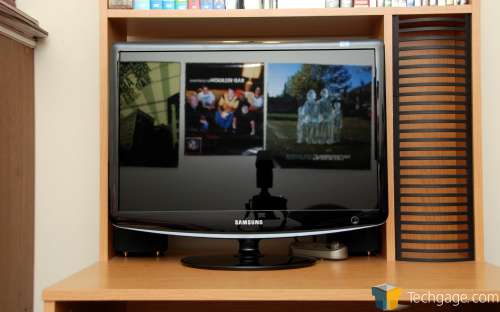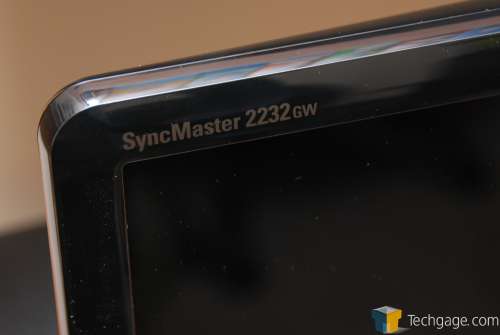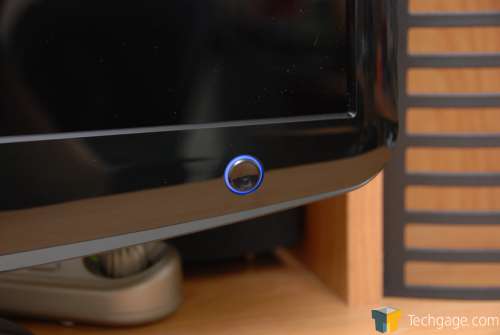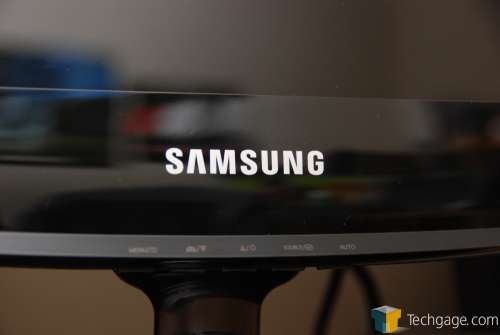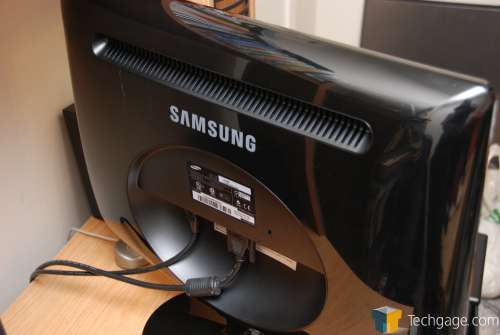- Qualcomm Launches Snapdragon 4 Gen 2 Mobile Platform
- AMD Launches Ryzen PRO 7000 Series Mobile & Desktop Platform
- Intel Launches Sleek Single-Slot Arc Pro A60 Workstation Graphics Card
- NVIDIA Announces Latest Ada Lovelace Additions: GeForce RTX 4060 Ti & RTX 4060
- Maxon Redshift With AMD Radeon GPU Rendering Support Now Available
Samsung SyncMaster 2232GW Wide-Screen
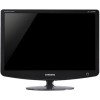
Mid-range displays keep on getting better and Samsung’s 2232GW is a great example of that. At 22″, it offers a 1680×1050 resolution, 2ms response and a 3000:1 contrast ratio and one of the sharpest images we’ve seen in a while.
Page 1 – Introduction
|
|
It wasn’t too long ago that 4:3 screen ratios were all we had. Casual computer users stuck to a tried and true 1024 or 1280 resolution, while the more “diehard” had a drool-worthy 1600×1200 resolution. In the past few years, there has been an abrupt shift from standard 4:3 panels to 16:9/10 ones though, and now it’s difficult to purchase anything but. This is a good thing. Such ratios are more natural to look at and improve gaming and movie-viewing alike.
Displays today could be thrown into four categories that range the various resolutions. For the lower-end, 1440×900 is a popular choice, which normally are affixed to the 19″ and lower models. Next would be what we are taking a look at today, the 1680×1050 models. This resolution is equipped on monitors between 20″ and 23″. Moving higher, we’d eventually reach 1920×1200 and 2560×1600, but those are in an entirely different price range altogether.
All of this might change next year, however. Given recent advances with notebook displays, we cannot be far off from having higher resolutions on smaller desktop monitors. Surely, if 1920×1200 is possible on a 17″ notebook display, we should at least be able to accomplish the same on a 20″ desktop monitor. Why this progression is taking so long to happen is beyond me.
For those who prefer standard resolutions on bigger screens, 22″ seems to fit the bill well. They offer a sweet 1680×1050 resolution which is great for both workflow and gaming. Although the pixel count is similar to 1600×1200, widescreen ratios can enhance gaming, at least in my opinion.
Samsung’s 2232GW offers great specs though when compared to other offerings available. First and foremost, they tout the 2ms response time as the killer feature, although it’s featured on a few other 22″ displays as well, including Samsung’s own 226BW. However, the 2232GW also has the advantage of a stellar 3000:1 contrast ratio, which should offer vibrant color and hopefully very deep blacks.
One slight downside that could be argued is that when moving up to a larger monitor that shares a resolution with a smaller model, the pixel width will increase. On some monitors, this increase is noticeable, but I haven’t found that to be the case at all with the 2232GW.
Enough talking. Let’s unbox this thing! Where design is concerned, Samsung normally does well to impress me. Not just with their monitors, but TVs and digital cameras as well. Their design prowess seems to extend far beyond a single market.
There are two versions of this monitor, with the difference being the glossy screen. Personally, I am not a fan of a glossy screen at all, but your opinion may vary. If anything, I hate the fact that they reflect everything else in the room, making it difficult to take a great photograph.
Not only a great-looking monitor, the 2232GW also sucks up dust better than a Swiffer.
The lone button on the front is the power, which lights up blue while in use.
The OSD menu buttons are well-hidden in the front, under the logo. They are surprisingly convenient to use and don’t stick out like a sore thumb as they do on some other monitors.
As mentioned earlier, the 2232GW features only VGA and DVI connectors, making setup a simple process. Unlike some monitor that really make you work during installation, Samsung made this setup painless. Kind of.
What I didn’t show in any of the images was how the base attaches itself to the monitor.
The base and the portion that connects to the monitor are two different pieces. Attaching those two pieces is a simple affair, but pushing the now complete base into the monitor was a little more tricky. Simply put, it doesn’t look like the neck of the base even fits into the monitor, but all is required is a little brute force and it will be connected.
The good thing in this is that the monitor will not fall off of the base-it’s totally secure. The downside is that when taking it apart (something only reviewers will have to do), it once again takes brute force to remove the two pieces. That leads to another potential downside though. The base does not rotate whatsoever, and the monitor itself can tilt up to 18°. There is no such thing as a vertical position on this monitor.
|
|
Support our efforts! With ad revenue at an all-time low for written websites, we're relying more than ever on reader support to help us continue putting so much effort into this type of content. You can support us by becoming a Patron, or by using our Amazon shopping affiliate links listed through our articles. Thanks for your support!




